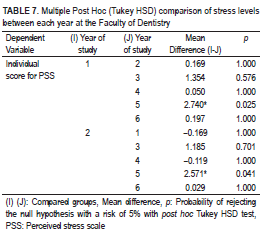Association between stress and self-reported bruxism among students from University of Sarajevo during the COVID-19 pandemic
DOI:
https://doi.org/10.17532/jhsci.2023.2124Keywords:
Student’s population, self-reported bruxism, stressAbstract
Introduction: Stress among students is a growing problem. As emotional stress increases, the limbic structures and hypothalamus are stimulated, activating the gamma efferent system, which ultimately leads to an increase in muscle tone or additional muscle activity that can become repetitive behaviors such as bruxism. The aim of the study was to investigate the stress level that students are exposed to, to determine the difference between students in terms of gender, faculty, and year of study, and to evaluate the possible relationship between stress level and self-reported bruxism in college students during the pandemic COVID-19.
Methods: In April 2022, a cross-sectional study was conducted on a sample of students from the Faculty of Dentistry and the Faculty of Pharmacy at the University of Sarajevo (BiH). The students answered a questionnaire consisting of two parts: The first part contained questions on basic personal data and data on self-reported bruxism and the second part contained questions on the perceived stress scale (PSS).
Results: The study included 756 students from both faculties. Analysis of stress levels among students revealed higher stress levels. Female students were more likely to be under stress than male respondents. Students in the Faculty of Pharmacy were more likely to be stressed than students in the Faculty of Dentistry. At the Faculty of Pharmacy, there was no difference in stress levels between the different years of study, while at the Faculty of Dentistry, the individual score for PSS was highest among 1st-year students. A high prevalence (46.8%) of self-reported bruxism was found among students in both faculties.
Conclusion: A slight positive correlation between self-reported bruxism and stress suggests that it is important to implement stress management strategies during academic education and to prevent bruxism and its consequences.
Downloads

Downloads
Published
License
Copyright (c) 2023 Alma Gavranović-Glamoč, Zinajda Šabić, Selma Alić-Drina, Sanela Strujić-Porović, Selma Jakupović, Alma Kamber, Emir Berhamović, Lejla Berhamović, Amela Džonlagić, Bakir Katana, Lejla Kazazić

This work is licensed under a Creative Commons Attribution 4.0 International License.










